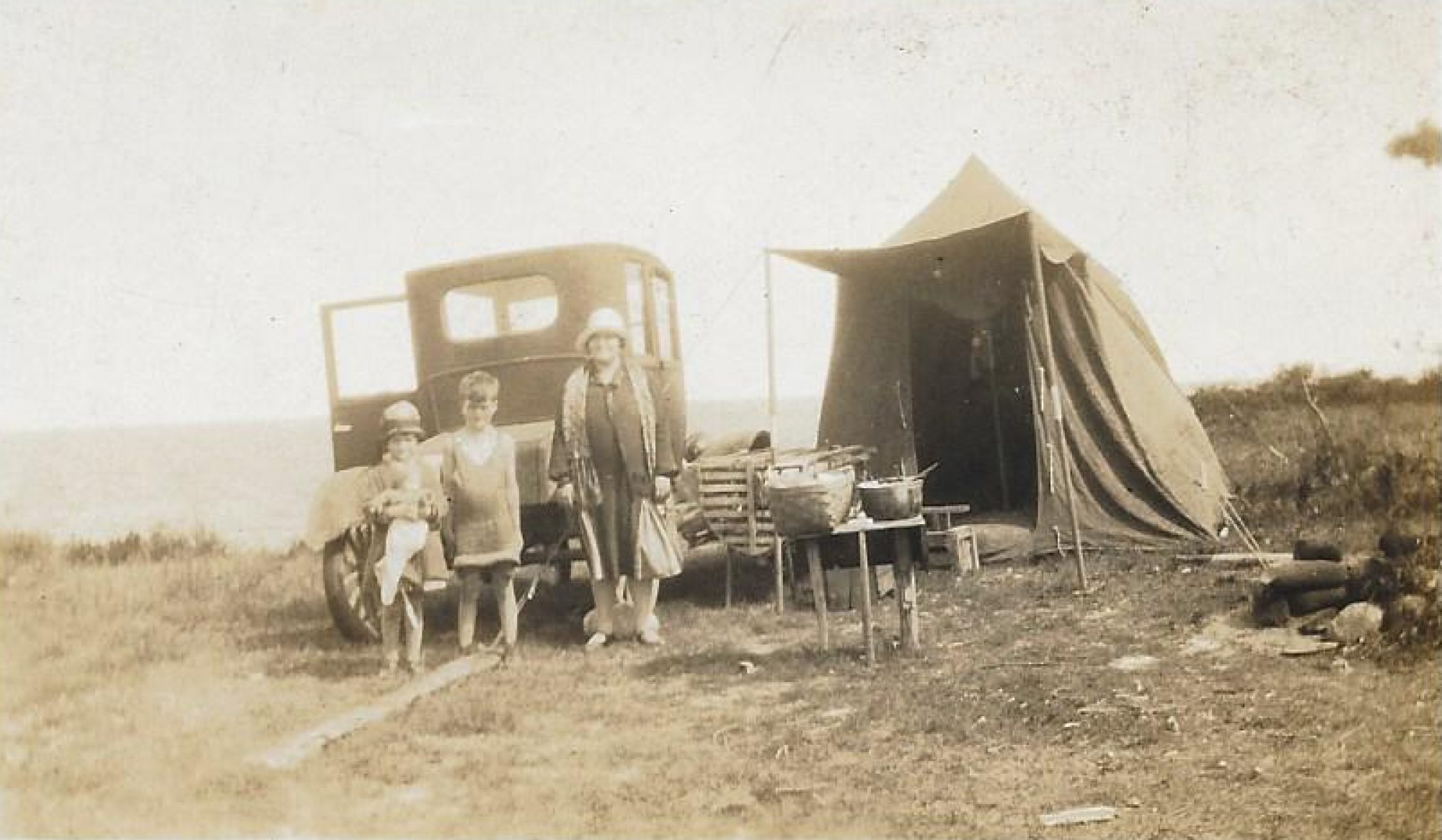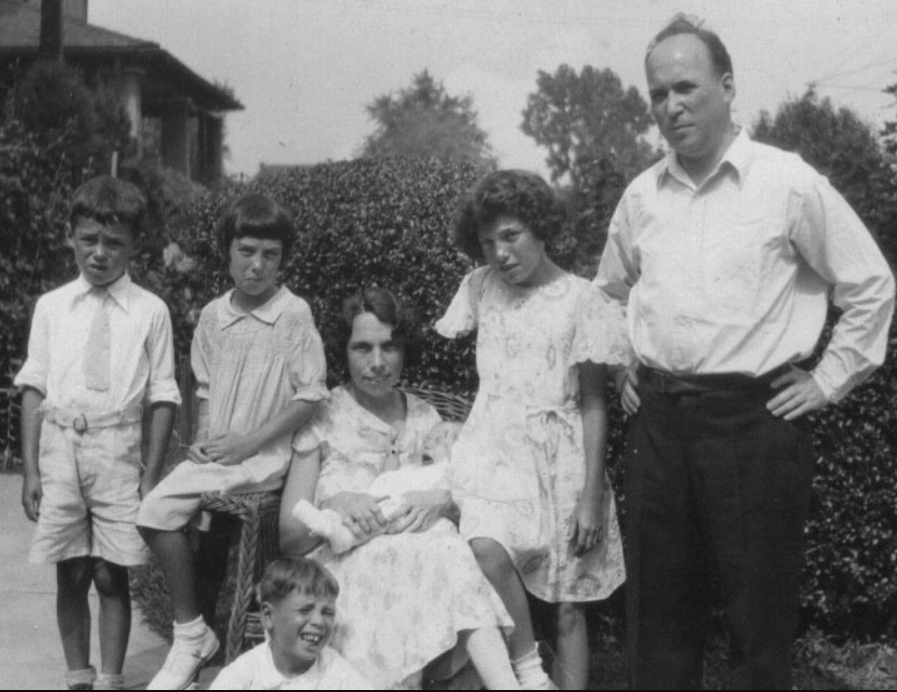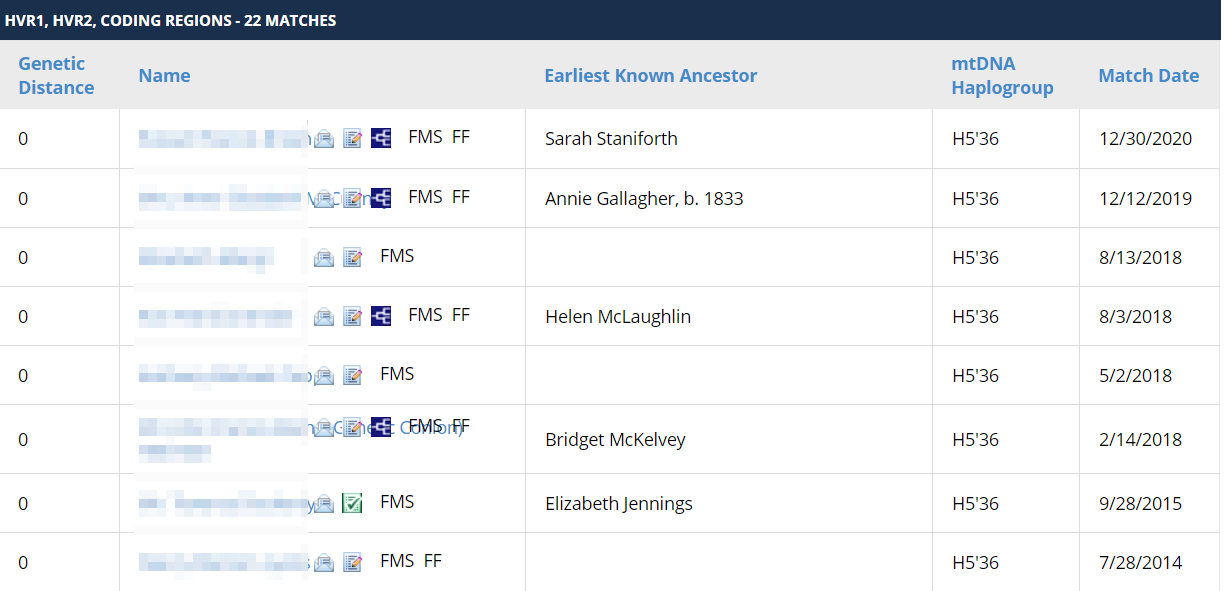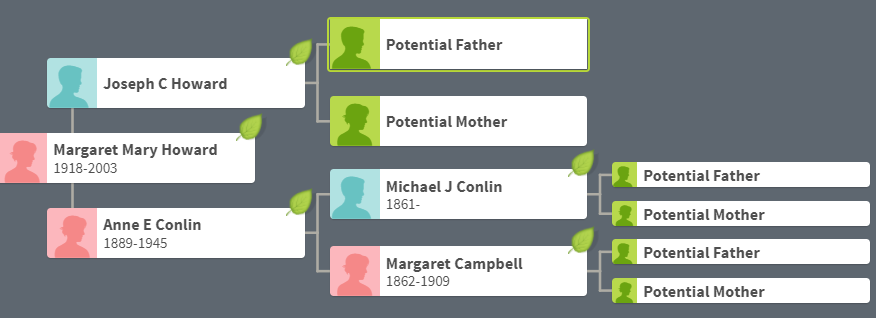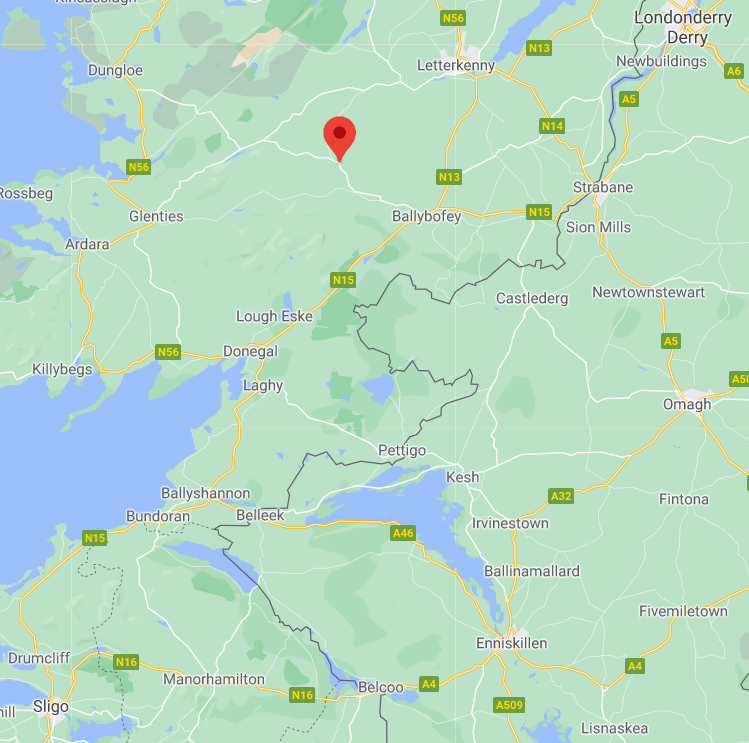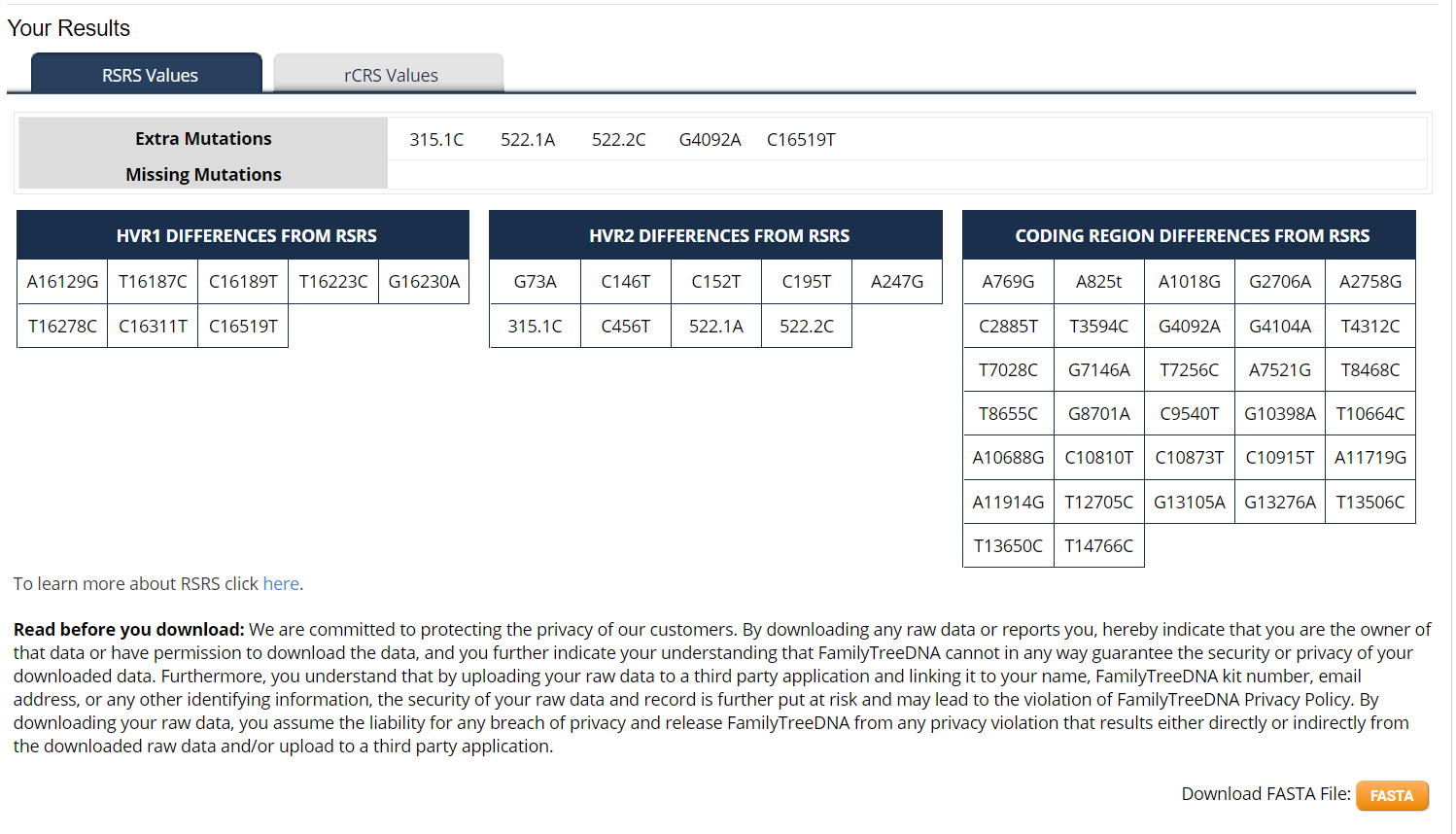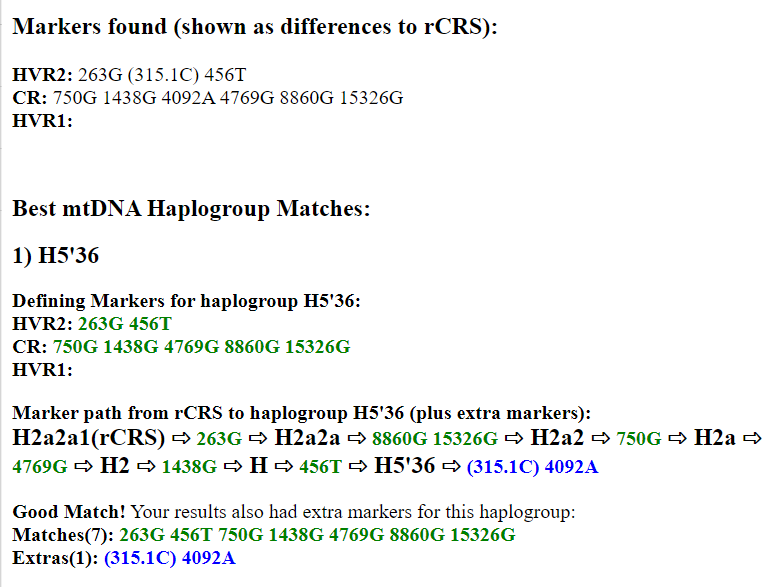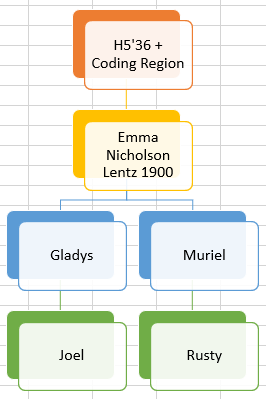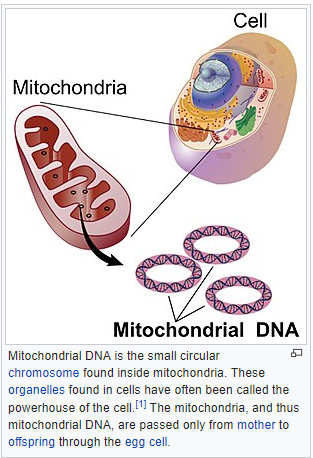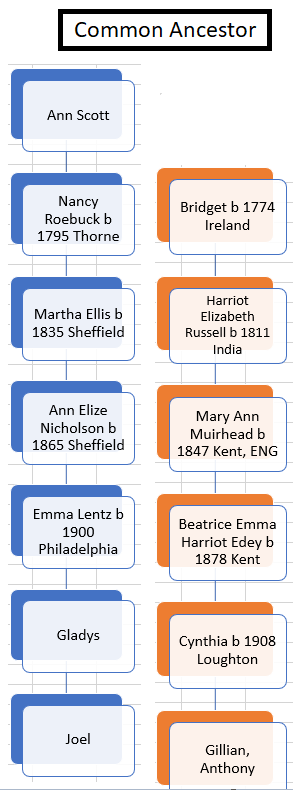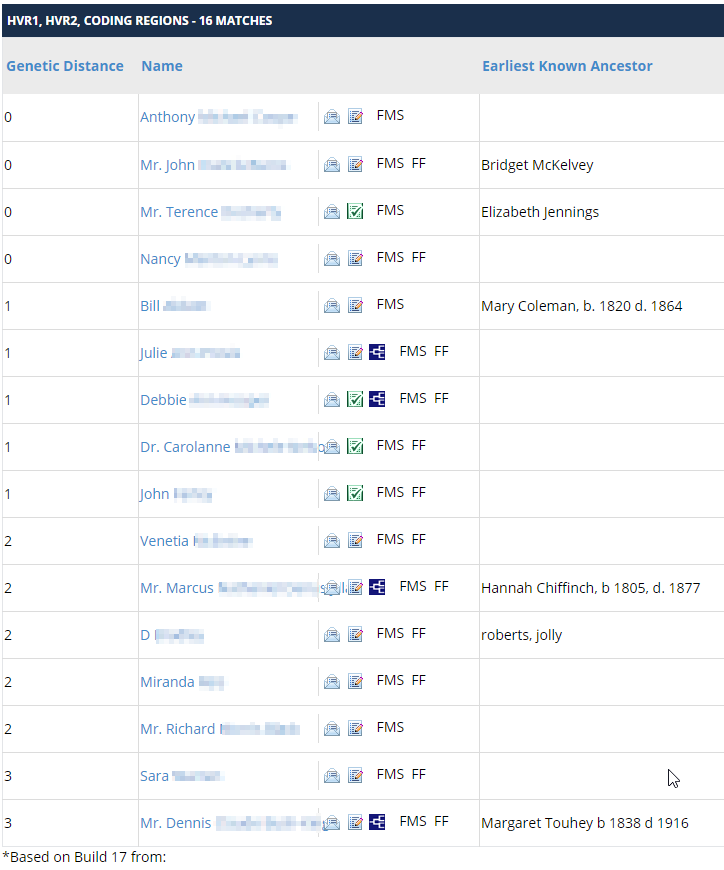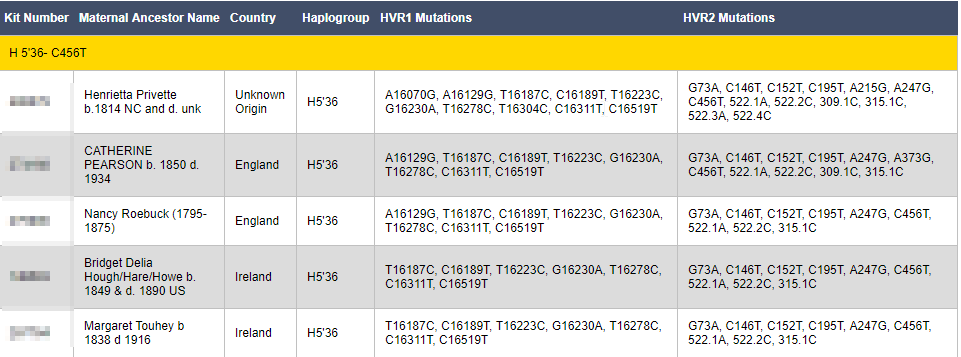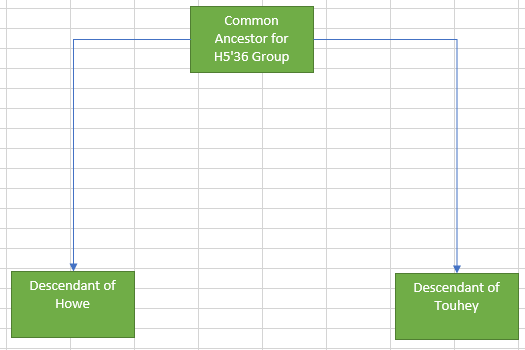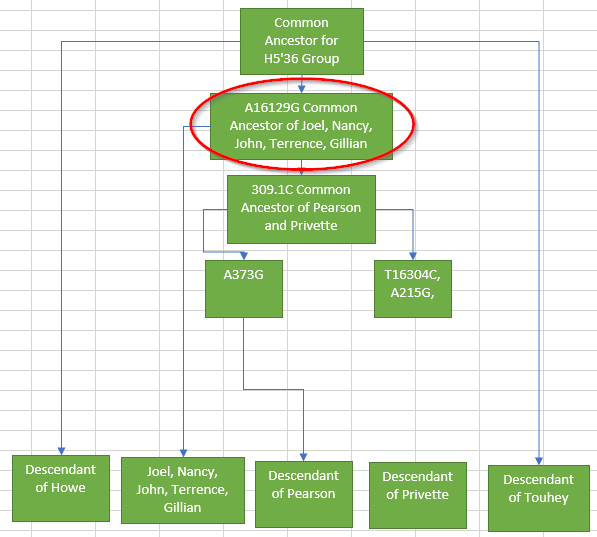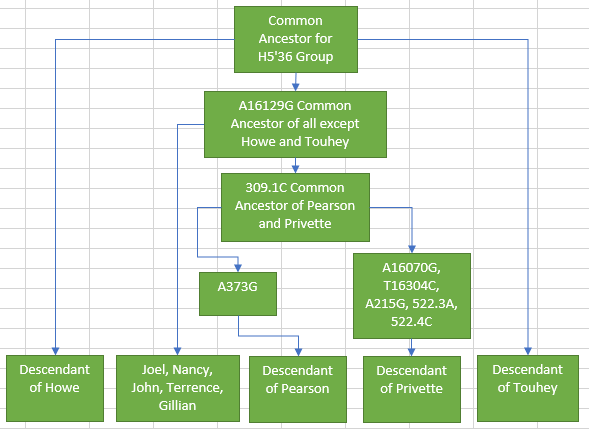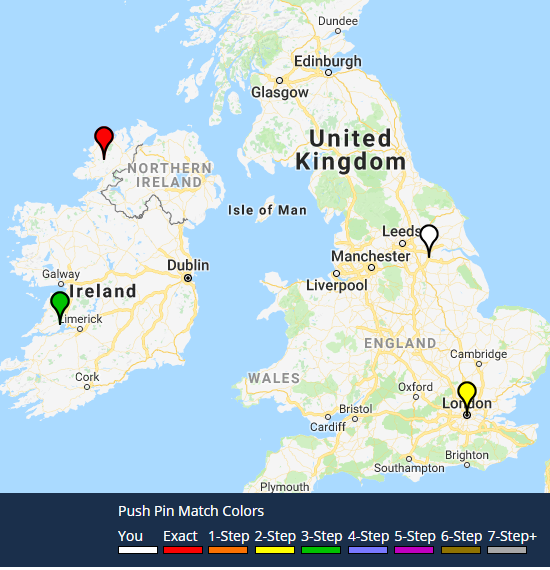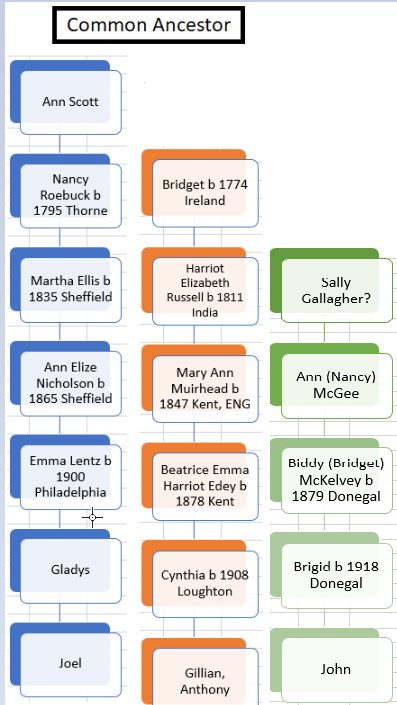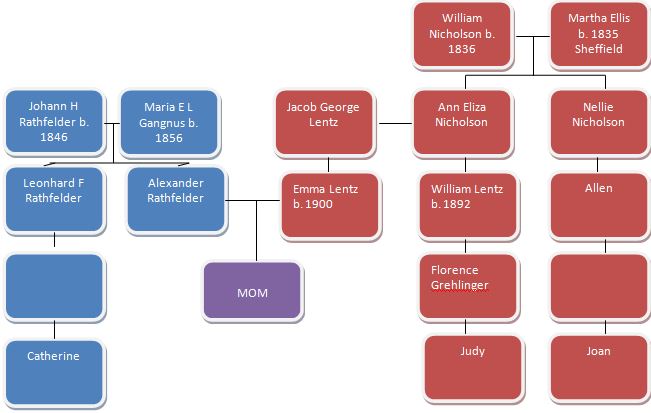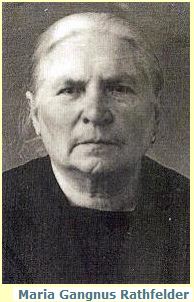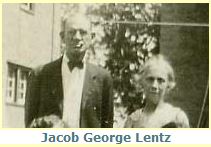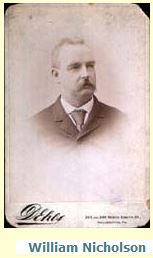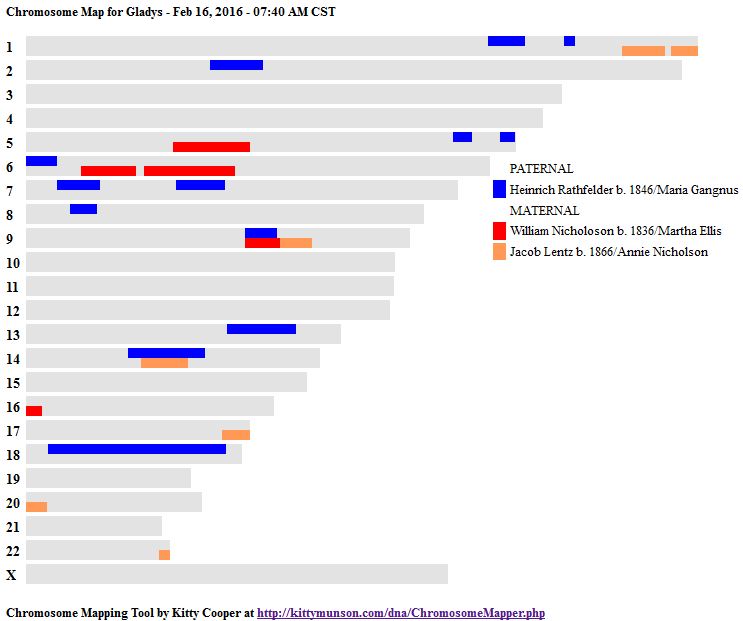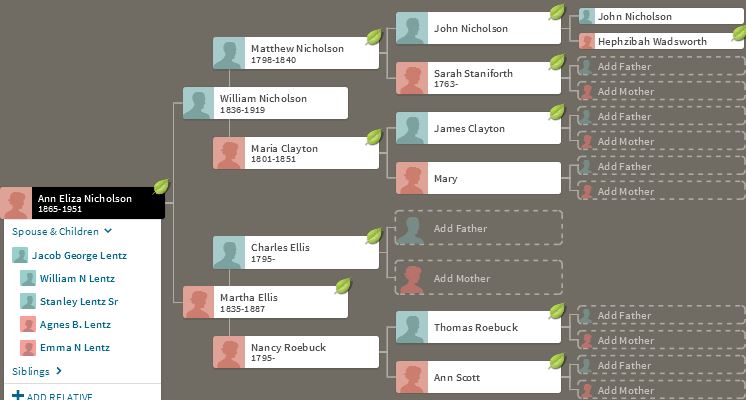Previously, for my Blogs, I had no category to sort my Blogs by Mitochondrial DNA. Now I have. I have also published two of my previous Blogs on Mitochondrial DNA. Here is the link to the more recent of the two Blogs.
One interesting comment I wrote in my first Blog on Mitochondrial DNA from 2018 was that I was getting about one zero “Genetic Distance” mitochondrial DNA match per year. This seems to still hold true:

It looks like my first ‘perfect’ match was in 2014 and I have a total of 10 matches. I had one zero genetic distance match each year from 2019 through 2022. My 2019 match was my cousin Rusty.
The Questions I am Trying to Answer
When writing, it is a good idea to have a purpose. I have these questions:
- How old is H5’36?
- How old are my zero matches likely to be?
- Where does the maternal genealogy for my matches lead me?
- Are there new developments for H5’36?
I don’t expect that I will answer all these questions definitively, but hope to get closer to answering these questions.
How Old is H5’36?
This should be an easy question, but I have a feeling that the answer is not easy. In my previous Blog, one answer I had was that a zero match with coding region would go back about 2200 years. I also uploaded my results to YFull and get this information:

If I interpret this correctly, then H5’36 goes back to about 6,000 BC. Based on those pieces of information, here is my interpretation. First, here are my matches:

Or, perhaps these are my matches with information on where there earliest maternal ancestor is from. Perhaps I could say:
- My genetic distance matches of three go back to 6,000 BC
- My exact matches go back to about 200 BC
- The other genetic distance matches would be spread out between. 8000 minus 2200 is 5800 years. If I divide that by three I get roughly 1900 years. That means I could put the genetic distance of 1 at 2100 BC and a genetic distance of 2 at about 4,000 BC.
Having said that, here is a view of YFull’s MTree:

This indicates that H5’36 was formed 16,200 years ago and that my common ancestor 13,400 years ago. I will also hazard an explanation for this also. The way the tree shows, H5’36 is the paren Haplogroup to many, many other H5 Haplogroups. As the parent to those other groups, the age is 16,200 years old. However, where I am which is apparently under none of that branching, I am at 8,000 years old. Hey, what’s 8,000 years, give or take?
My sample is the one without the flag, so I’ll need to add England when I figure out to do that. I think that I read there is a way to do this but you have to set YFull to female. Now I’ve figured it out:

I was not seeing the tab here under My settings. I pushed the mtDNA tab and now can add my information. Hopefully I fixed that problem.
New Developments for H5’36
Seeing as I have looked at the MTree already, I’ll look at this issue next. It appears that new branching has taken place on the MTree which is maintained by YFull. YFull may be ahead of FTDNA or behing FTDNA depending on how much time FTDNA has been spending on a certain area. It appears that FTDNA has not done much with the mitochondrial DNA tree lately.
YFull’s MTree
YFull appears to be ahead of FTDNA in creating a mitochondrial DNA Tree. Here is the H5’36 Tree:

I had alluded to this earlier. Notice that my flag of England is now included. However, when I scrolled to the bottom of this tree, I see my H5’36 branches:

There is now an H5’36a, b, and c. It is difficult for me to see all this tree, so I will create a two level tree to see the structure:

This was actually quite simple. Most of the testers come in under H5. My understanding is that historically, H5’36 was discovered after H5 which is why it has a strange name. Apparently, even though there are new branches under H5’36, I am still under the original branch.
Further, YFull’s MTree gives the mutation which identifies each of these branches:

[However, see later in the Blog for a corrected tree.]
My assumption is that I have mutation C456T and that I do not have the other four mutations. Here are my results:

Mutation C456T is in my HVR2 results. I don’t see the other mutations in my results.
SNP Tracker
SNP Tracker looks at both location and dates, so perhaps this online program will be helpful:

Based on SNP tracker, the location for H5’36 is around present day NW Germany. However, the date for this Haplogroup is very old:

However, this seems to be somewhat consistent with YFull – but YFull’s more recent date. Note that between England and Ireland, England barely edges out Ireland by 10 to 9. I am interested in the skull icon in the bottom row. So I click on that and get:

I then chose the United Kingdom sample from 3500 years ago and get this location:

This is possible a female ancestor or certainly a relative of a female ancestor. A sample of one is difficult to make assumptions from, but my feeling prior to this blog was that my mother’s maternal ancestors came from Scotland and that descendant went to both England and Ireland. This sample of one would appear to support my previous assumption.
FTDNA Haplotree
After much searching, I was able to find the FTDNA Haplotree:

Here is a slightly expanded view:

I don’t understand the difference between the light blue and the dark blue and I don’t understand the significance of the numbers. Also notice that the structure is somewhat different than YFull’s MTree. On the MTree, H36 is under H5’36-b:

This tells me that technically my depiction of the MTree is not corrrect. The MTree has a H5’36b and an H5’36-b:

Here I added H36 to reconcile YFull’s MTree with FTDNA’s Haplotree.
Where does the maternal genealogy for my matches lead me?
This is the final question and I have already touched upon it. SNP Tracker appears to take all the H5’36 results and averages out a location which is NW Germany. I believe that FTDNA is more precise in that it takes into account the Coding Region which is more specific.
Here is the Matches Map from FTDNA:

Of interest to me is that all matches are from the British Isles. The map is based on those who have reported an earliest maternal ancestor. There are 6 locations. Of these matches, the most interesting to me are the two red balloons in County Donegal. I wonder if these two are related to each other. Here are these two matches from my Match List:

Russell is my cousin Rusty. His ancestors are the same as my maternally and go back to the area North of Sheffield, York, England. Including my self, that accounts for four out of the 11 tests.
In addition, there is a tree icon in the above list. Steve, Russell, and Ann have family trees in addtion to the two perfect matches from the Matches Map.
Here is a spreadsheet that I would like to fill out:

Steve and His Maternal Genealogy
As Steve is the newest match, I would like to look at his genealogy. Here is how Steve reports his maternal ancestry at FTDNA:

Here are the details for Mary Chickey:

This would be more in general area of the British Isles that my maternal ancestry goes back to. It should be easy for me to recreate Steve’s tree:
Here is Florence in 1911:

Here is Hunslet outside of Leeds:

Florence was 2 in 1881. Her father was from Ireland, but I am tracing the mother’s side:

Florence’s mother Theresa was from Leeds. Here is where she was buried:

According to the 1861 Census, Theresa’s mother was born in Ireland:

Also of interest, Theresa’s younger sister was born in Birminham:

More on Maria
This appears to be Maria’s marriage in 1857 in Birmingham:

The transcription is Lamler, but I see the name as Lawler. Aslo this is a Church of England marriage, but I had thought that the family was Roman Catholic. Here is Maria in 1851:

This corroborates her birth in Ireland and her father as Martin as per the Marriage record above. So Steve’s maternal tree does lead to Ireland:

I would guess that the Lawler family moved from Ireland to England around 1841. In fact, here is the family in 1841 living in Leeds – though the last name is a bit mangled:

Who Was Fanny Lawler?
The hints on Ancestry lead me to believe that she was Frances Elina Green and that she was buried in Eau Claire, Wisconsin. Let’s see if that seems reasonable. Here is the family in 1861:

Mary (or Maria) had left the home by now as she married in 1857. Here is the 1870 Census for Sumner, Wisconsin:

It appears that Dennis would be the son of Martin and Frances. At any rate, Dennis would have been born around 1824. The story is holding together as Dennis shows up in the 1841 as being 15. This would have him born around 1826. However ages over 15 were rounded.
The 1880 Census gives a middle name:

She is Frances Elina.
Here is a marriage record from Rathfarnham, South of Dublin, that appears to apply:

One issue with this marriage is that Frances would have been about 15 when she married if she was born in 1807. However, Frances was probably born before 1807:

One tree at Ancestry shows this:

Frances’ mother’s name is give as Mary Kenny. It would make sense for Frances’ father to be Richard as it would be traditional for Frances to name her second son after her father (and her first daughter after her mother). Suffice it to say that Steve’s maternal line was in Ireland probably before the year 1800.
Ann and Her Maternal Genealogy
Here is my updated spreadsheet:
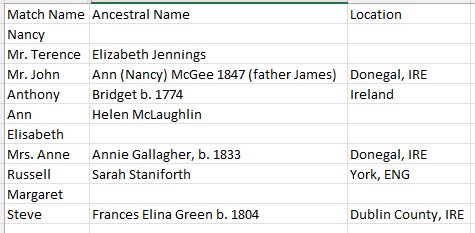
I have that Ann has a maternal ancestor of Helen McLaughlin, but where did she live? Ann has a three person tree at FTDNA and shows this person as her mother:

It turns out that I had already built out this tree:

I had gotten back to Ann Campbell born 1867 in County Tyrone, Ireland. A name like Campbell suggests a Scottish background. However, her mother may not have been Scottish.

At this point, at least in the early 1800’s mitochondrial matches’ DNA lead back to Ireland.
Summary and Conclusions
- I continue to get about one zero step mitochondrial DNA match per year.
- When I trace my closest matches, their genealogy goes back to Ireland – at least in the early 1800’s.
- However, I trace my own maternal line to 1795 or before in Thorne, Yorkshire County, England.
- One early archaelogical sample of H5’36 was found in Edinburgh. Perhaps descendants set out from there to Ireland and England.
- The dating of H5’36 was confusing. It appears to go back to 6,000 BC or before, but my matches with zero genetic distance may be around 2,000 BC or sooner.
- YFull’s MTree seems to be more precise under H5’36 compared to FTDNA’s Haplotree.
